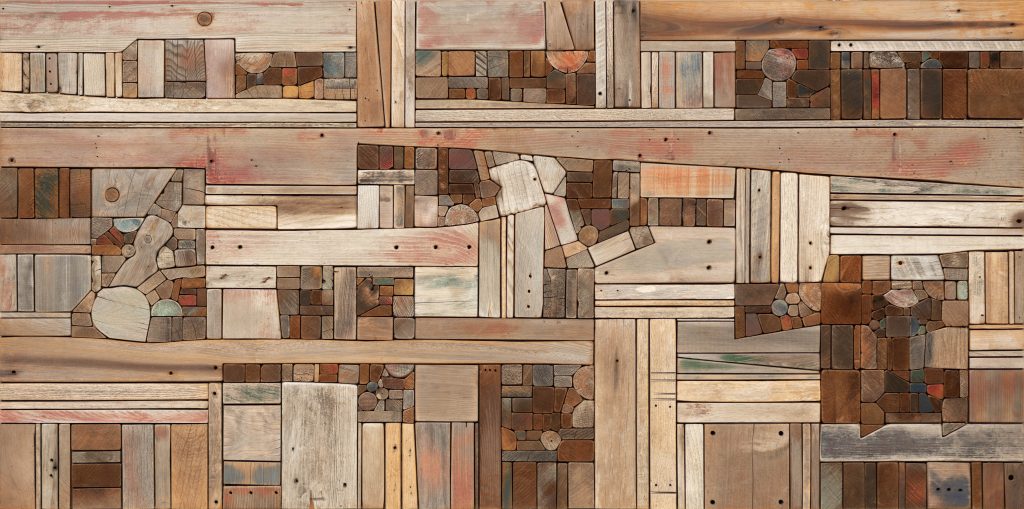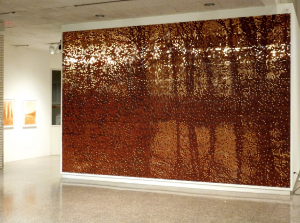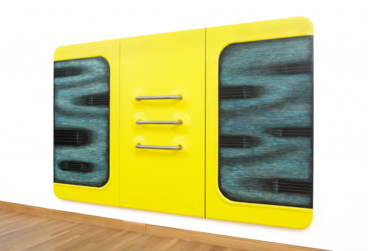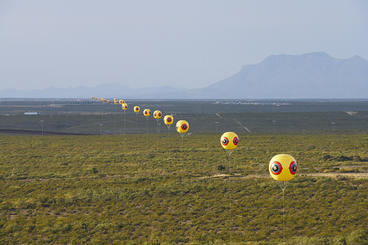To make Wood Collage: Landscape, George Morrison collected driftwood and fit the pieces together to form what he described as a “painting made of wood.” He assembled a loose grid structure, with the smaller fragments seeming to coalesce into squares, divided by beams that stretch across the composition. In places, the texture of the wood gives the impression of brushstrokes. Color also appears: not just the browns and tans expected from driftwood but also red and traces of green, blue, and purple. Near the top of the collage, Morrison used a long plank to establish a horizon line, a common theme throughout his work. Color, shape, texture, the hint of a horizon: all reinforce the idea of the work as a landscape painted with wood.
Born near the Grand Portage Indian Reservation in northern Minnesota, George Morrison grew up on the shores of Lake Superior. Morrison was Ojibwe, and his identity has been constantly questioned throughout his career, from the racism he faced as an emerging artist to criticism that he “ignored his heritage” since his abstract work was “not Indian enough.” Morrison rejected expectations about his art and identity, reflecting at the end of his career, “I never played the role of being an Indian artist. I always just stated the fact that I was a painter, and I happened to be Indian.” However, his Minnesota roots had a lasting impact on his art.
In 1943 Morrison moved to New York just as the city was evolving into the center of the art world. His radically abstract work was exhibited widely to critical acclaim, and he developed lasting relationships with Jackson Pollock, Franz Kline, and Willem de Kooning. It was outside of the city that Morrison began to experiment with wood collages. First on the beaches in Provincetown, Massachusetts, and later on the shores of Lake Superior, Morrison started collecting driftwood. He specifically searched for interesting shapes and textures, often with visible nail holes. He then returned to his studio and dried the fragments in order to create an aged appearance.
Once the wood looked the way he wanted it, Morrison would begin fitting pieces together. He allowed the shape of the wood to guide the process, but a horizon line anchored his overall vision. Throughout his time on the East Coast, Morrison remained inspired by the rock formations of the North Shore, and the colors, textures, and shapes in his wood collages recall this environment. When he returned to Minnesota in 1970, Morrison directly incorporated the landscape, making his collages from wood collected by Lake Superior. Wood Collage: Landscape is part of this later group of collages, doubly derived from northern Minnesota. Both the materials Morrison used and the shoreline his work evokes are based in the land, lake, and sky of the place where he was born.
Image: George Morrison, Wood Collage: Landscape, 1978, found and prepared wood. Gift of James and Teddy Gesell.



